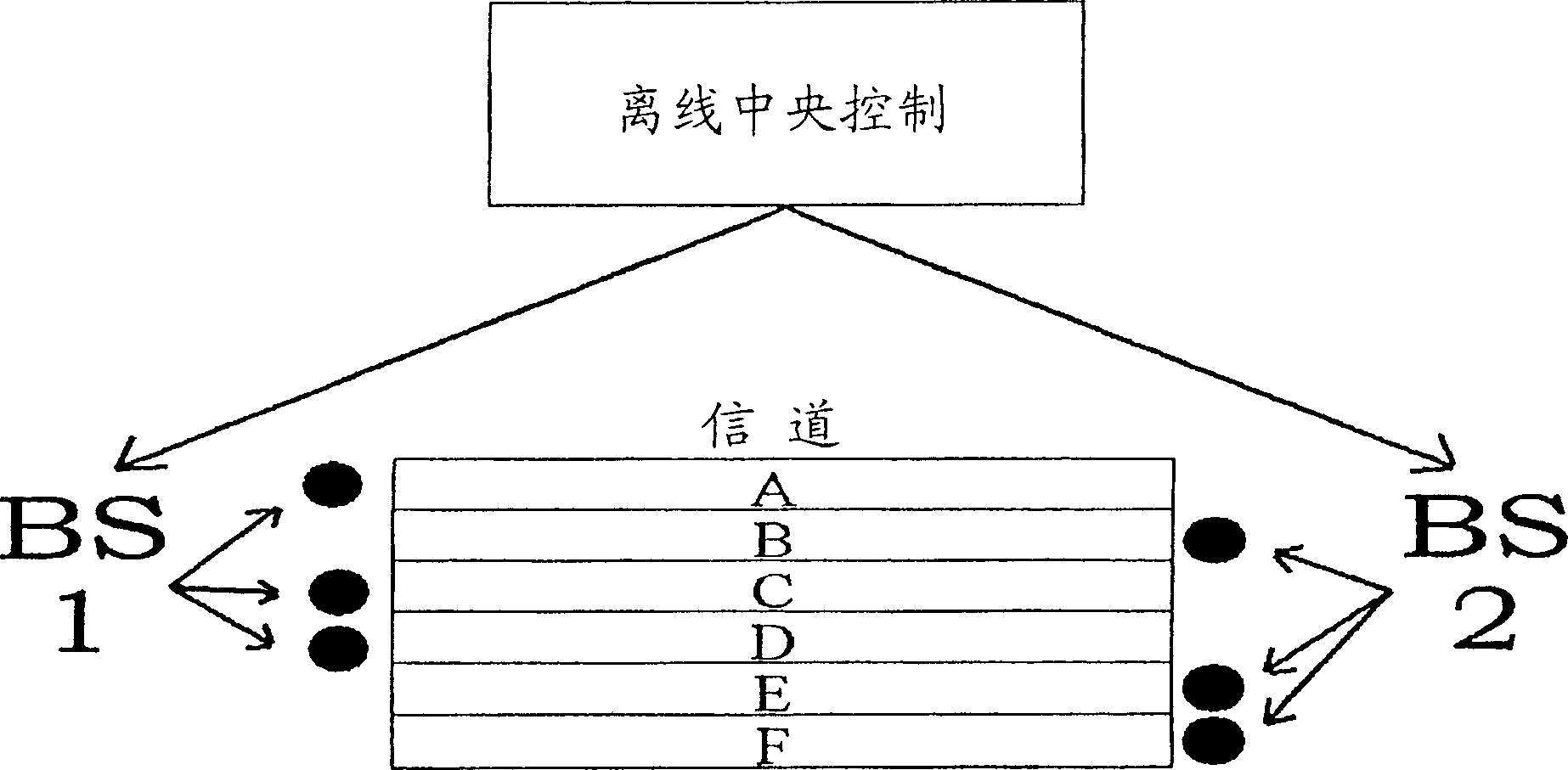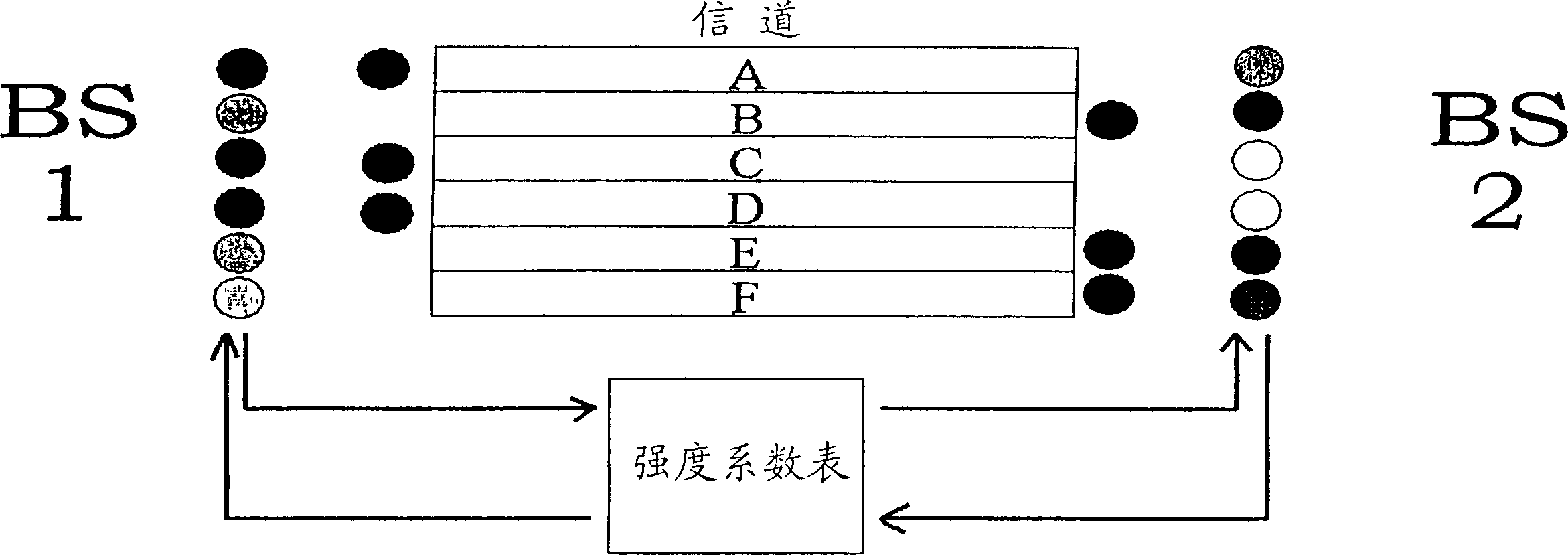Allocation of channels to radio transceivers
A radio transceiver and transceiver technology, applied in the field of channel allocation, can solve problems such as interference, and achieve the effect of eliminating needs and dependencies, saving labor, and avoiding inaccuracy
- Summary
- Abstract
- Description
- Claims
- Application Information
AI Technical Summary
Problems solved by technology
Method used
Image
Examples
Embodiment Construction
[0029] Figure 1-3 Two base transceiver stations BS1, BS2 are shown, both of which have access to six traffic channels A, B, C, D, E, F. exist figure 1 In the prior art system, a central controller determines the optimal allocation. This occurs "offline" based on interference and congestion data collected over a period of time. The best distribution is then added to the network. optimal distribution figure 1 The marks in indicate that channels A, C, and D are assigned to BS1, and channels B, E, and F are assigned to BS2.
[0030] figure 2 The allocation method of the prior art system disclosed in WO099 / 56488 is shown. Each base station maintains a set of priority values, defined by figure 2 The six shaded channel markers represent the middle grade. The base station communicates these priority values to other base stations in the network, which multiply them by the relevant coefficients in a globally recognized table of strength coefficients. The resulting value is...
PUM
 Login to View More
Login to View More Abstract
Description
Claims
Application Information
 Login to View More
Login to View More - R&D
- Intellectual Property
- Life Sciences
- Materials
- Tech Scout
- Unparalleled Data Quality
- Higher Quality Content
- 60% Fewer Hallucinations
Browse by: Latest US Patents, China's latest patents, Technical Efficacy Thesaurus, Application Domain, Technology Topic, Popular Technical Reports.
© 2025 PatSnap. All rights reserved.Legal|Privacy policy|Modern Slavery Act Transparency Statement|Sitemap|About US| Contact US: help@patsnap.com



